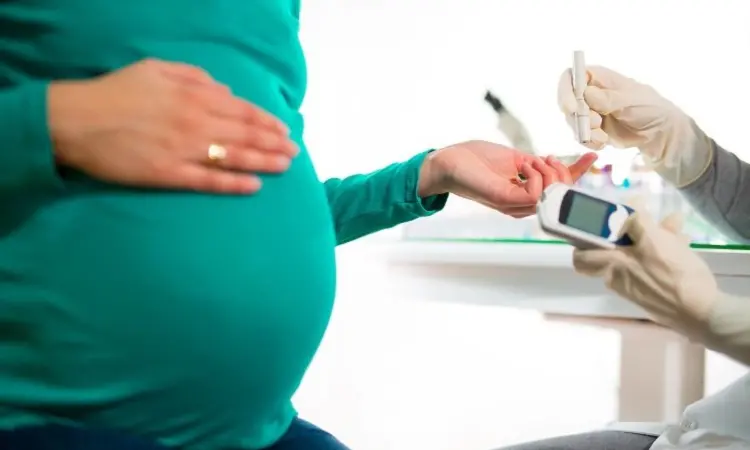- Home
- Medical news & Guidelines
- Anesthesiology
- Cardiology and CTVS
- Critical Care
- Dentistry
- Dermatology
- Diabetes and Endocrinology
- ENT
- Gastroenterology
- Medicine
- Nephrology
- Neurology
- Obstretics-Gynaecology
- Oncology
- Ophthalmology
- Orthopaedics
- Pediatrics-Neonatology
- Psychiatry
- Pulmonology
- Radiology
- Surgery
- Urology
- Laboratory Medicine
- Diet
- Nursing
- Paramedical
- Physiotherapy
- Health news
- Fact Check
- Bone Health Fact Check
- Brain Health Fact Check
- Cancer Related Fact Check
- Child Care Fact Check
- Dental and oral health fact check
- Diabetes and metabolic health fact check
- Diet and Nutrition Fact Check
- Eye and ENT Care Fact Check
- Fitness fact check
- Gut health fact check
- Heart health fact check
- Kidney health fact check
- Medical education fact check
- Men's health fact check
- Respiratory fact check
- Skin and hair care fact check
- Vaccine and Immunization fact check
- Women's health fact check
- AYUSH
- State News
- Andaman and Nicobar Islands
- Andhra Pradesh
- Arunachal Pradesh
- Assam
- Bihar
- Chandigarh
- Chattisgarh
- Dadra and Nagar Haveli
- Daman and Diu
- Delhi
- Goa
- Gujarat
- Haryana
- Himachal Pradesh
- Jammu & Kashmir
- Jharkhand
- Karnataka
- Kerala
- Ladakh
- Lakshadweep
- Madhya Pradesh
- Maharashtra
- Manipur
- Meghalaya
- Mizoram
- Nagaland
- Odisha
- Puducherry
- Punjab
- Rajasthan
- Sikkim
- Tamil Nadu
- Telangana
- Tripura
- Uttar Pradesh
- Uttrakhand
- West Bengal
- Medical Education
- Industry
Pregnant women with high BMI and gestational diabetes at risk of delivering large for gestational age babies

China: A recent study published in Diabetology & Metabolic Syndrome has linked changes in maternal BMI (body mass index) to the risk of large for gestational age (LGA).
"BMI changes could be a useful predictor for LGA incidence in singleton pregnant women with gestational diabetes mellitus (GDM)," Lihua Lin, Affiliated Hospital of Fujian Medical University, Fuzhou, Fujian Province, P.R. China, and colleagues wrote in their study.
There is an increasing prevalence of gestational diabetes mellitus worldwide. It is well established that gestational diabetes poses a significant threat to mothers and their offspring and has short-term and long-term effects, including LGA. Large for gestational age describes excessive fetal weight, defined as neonates' birth weights at or above the 90th percentile for gestational age. LGA can increase the risk of C-sections, prolonged labour, postpartum haemorrhage, obstructed shoulder delivery, and birth trauma in mothers. LGA infants are more prone to intrauterine death and fetal hypoxia. Also, they are at higher risk of developing obesity, diabetes, and metabolic syndrome in adulthood.
The research team aimed to investigate the relationship between body mass index changes and large for gestational age in women with gestational diabetes mellitus in a retrospective cohort study.
The study included 10,486 women with gestational diabetes mellitus. A dose-response analysis was performed of BMI changes and LGA occurrence. Binary logistic regressions were performed to assess crude and adjusted odds ratios (ORs). ROC (Receiver operating characteristic) curve and AUCs (areas under the curve) were used to evaluate the ability of BMI changes for LGA prediction.
The authors reported the following findings:
· The probability of large for gestational age increased with increasing BMI. The risk of LGA increased across the BMI change quartiles.
· The BMI change remained positively associated with the risk of LGA after stratification analysis.
· The AUC was 0.570 in the entire study population, and the best optimal predictive cut-off value was 4.922, with a sensitivity of 0.622 and a specificity of 0.486.
· The best optimal predictive cut-off value decreased from the underweight group to the overweight and obese group.
"Our findings revealed a close relationship between maternal BMI changes and LGA risk in women with gestational diabetes," the authors wrote. "In conjunction with the Chinese guidelines, maternal BMI changes may lower the incidence of LGA in GDM patients in the clinic."
"Future multicentre prospective population studies are required for further verification," they concluded.
Reference:
Lin, L., Wu, J., Xu, L. et al. Maternal body mass index and risk of fetal overgrowth in women with gestational diabetes Mellitus in Southeast China: a retrospective cohort study. Diabetol Metab Syndr 15, 121 (2023). https://doi.org/10.1186/s13098-023-01093-y
Dr Kamal Kant Kohli-MBBS, DTCD- a chest specialist with more than 30 years of practice and a flair for writing clinical articles, Dr Kamal Kant Kohli joined Medical Dialogues as a Chief Editor of Medical News. Besides writing articles, as an editor, he proofreads and verifies all the medical content published on Medical Dialogues including those coming from journals, studies,medical conferences,guidelines etc. Email: drkohli@medicaldialogues.in. Contact no. 011-43720751


